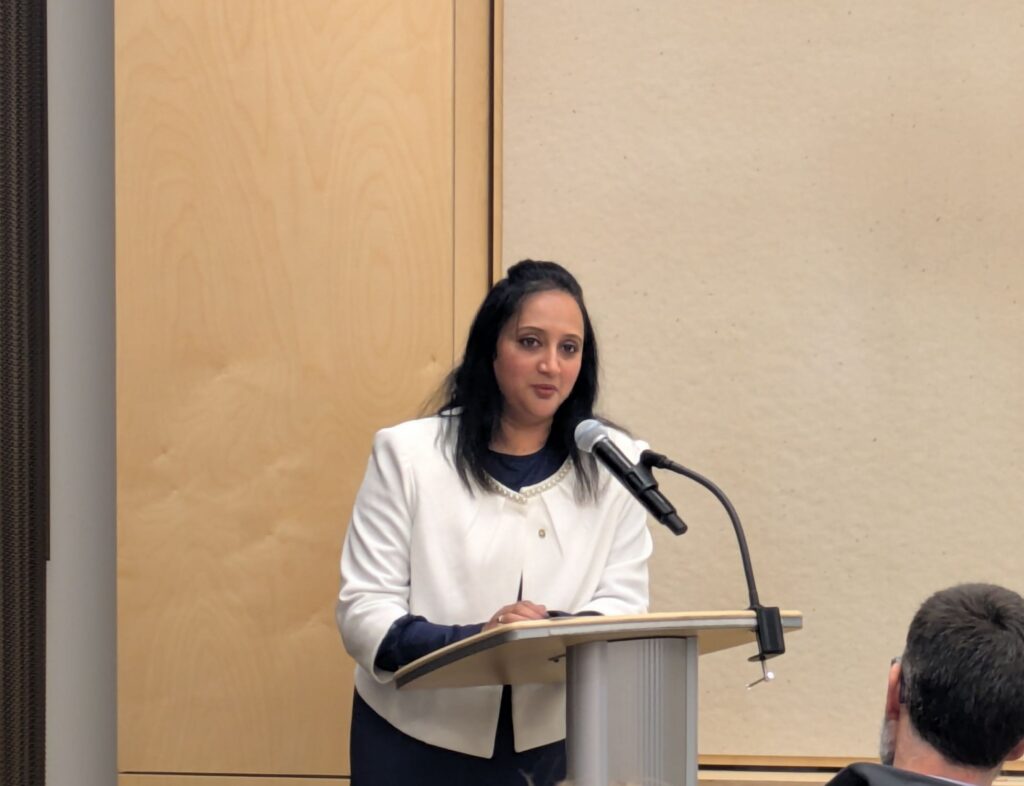To AIA Baltimore members and firms:
The Baltimore Greenway Trail Network will help make Baltimore a more equitable and connected place. These infrastructure improvements are a vital next step.
The Green Network (Baltimore City Planning) and Baltimore Greenway Trails Network (Rails to Trails Conservancy) have created a coordinated plan to connect the city’s parks, diverse neighborhoods, entertainment areas, and anchor institutions such as universities and hospitals with a path network throughout Baltimore. The Baltimore Greenway Trail Network (Greenway ) will connect existing paths for those on foot, scooters or bikes, uniting a fragmented city where the redlining of the past still needs to be dealt with. We are too much a city of parts so reinforcing the sum should make us all greater.
The Baltimore Greenway will remedy missing links between five existing trails: The Jones Falls, Gwynns Falls, Herring Run, Middle Branch Trails, and the Inner Harbor Promenade. Adding the 10 miles of connecting paths needed to unite 30+ miles of existing trails will have an enormous impact for residents. Many of our trails are deep in parks, secluded from people’s daily lives. This plan will connect the trails to many more of our neighborhoods, vastly improving residents’ access to more parts of the city through the park system and neighborhood amenities which make Baltimore great! The Inner Harbor Promenade was a visionary plan a generation ago. Today, Baltimore is still benefitting from the investment in the Promenade; thousands of visitors and residents flock to it every day enlivening the waterfront. The Promenade serves as an important artery for people to go to work, to recreate, to access museums and patronize local businesses. The Greenway can build on the momentum of the Promenade by extending it into and around Baltimore touching over 80 neighborhoods directly and being within a half mile of almost every neighborhood in the city.
There are many examples of trail networks having positive impacts on cities. In Boston, the Emerald Necklace links over 1,000 acres of parks together through a chain of green infrastructure. This amenity has been in place for more than a century – looking back, Boston residents will attest to the value of the initial investment. Atlanta’s BeltLine is a more recent example of how a built-up city might retrofit a trail loop into its urban fabric. The BeltLine investment has reinvigorated neighborhoods and inspired major developments at many nodes along its footprint. Even hilly Pittsburgh has a well-connected trail network that spurs from its riverfront promenades.
The Baltimore Greenway Trail Network has been quietly gaining momentum and support while building partnerships to promote more equitable public spaces, invite residents and visitors to co-mingle, bolster interaction with nature, repurpose abandoned spaces, and build physical connections between communities. It has been adopted by the Baltimore City Planning Commission and was recently included in the Greater Washington Partnership’s Regional Mobility Plan, but a steady stream of funding has yet to be identified.
The project has received notable grants – a $360,000 Bikeways grant from the state of Maryland for trail segments in north Baltimore and $250,000 for trail design in south Baltimore were awarded to the project. Additionally, the Collective at Canton has built critical connecting trail segments, and land has been donated to the City for future trail construction. While this is a step in the right direction, more needs to be done. There are design and implementation costs, costs for land acquisition and planning. According to a forthcoming Economic Impact Study, the $27 million investment to complete the trail network will lead to a one-time $ 48 million boost the local economy as a direct result of trail constructions, with up to $100 million ANNUALLY in local spending along the trail and millions more in public health savings and new property tax revenue each year returned to the city.
Investments in the Greenway are relatively inexpensive, considering the huge impact the project would have. By completing the project in full, the City would accrue monetary and health benefits for its citizens. The Greenway is an opportunity to improve residents’ access to equitable transit options, promote recreation and sustainability, and increases the livability of our neighborhoods. AIA Baltimore’s Urban Design Committee (UDC) has volunteered countless hours over the past several years to further this effort with Rails to Trails and Baltimore City Planning, but more support is needed to help move forward sooner.
Completion of the Greenway will be a win for Baltimore, but there are obstacles: funding and agency coordination are just a few. Public, private, and anchor institution support is essential to ensuring its successful and timely implementation. While Baltimore City Government, the local philanthropic community (France-Merrick, Goldseker) the private sector, and most importantly residents of Baltimore have continued to support this incredible project – there is a need now more than ever to push this project into the next gear. The call for equity in our cities demands it, as does the necessity of safe places for transportation, recreation, and participating in the local economy necessitated by our adaptation to the Covid -19 pandemic. Now is the time to take a leap forward and complete a project that will make Baltimoreans proud for generations. The Baltimore Greenway Trails Network deserves support from AIA Baltimore and organizations around the area. We, the Urban Design Committee, strongly support this momentous project and ask you to do the same.
Please let us know if you will support us by allowing the Urban Desing Committee to include your organization’s signature and logo in a letter to our newly elected or re-elected officials. The letter will ask them to dedicate funds and draft legislation to spur progress on the Loop, leading to its timely completion. If you would like to participate as a supporter, contact UDC co-chairs Ren Southard (renata.southard@baltimorecity.gov) or Sam Lynch (slynch@ci-designinc.com).
Signed,
Urban Design Committee, AIA Baltimore
Additional information related to the plans can be found here:
- Baltimore Green Network Plan:
https://planning.baltimorecity.gov/green-network-plan
- Baltimore Greenway Trails Coalition:
https://www.railstotrails.org/our-work/trailnation/baltimore-greenway-trails-coalition/
- Greater Washington Partnership Regional Mobility Plan:
http://www.greaterwashingtonpartnership.com/initiative/mobility/


